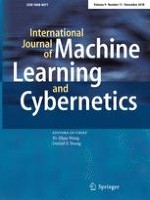07-06-2017 | Original Article
Relation granulation and algebraic structure based on concept lattice in complex information systems
Published in: International Journal of Machine Learning and Cybernetics | Issue 11/2018
Log inActivate our intelligent search to find suitable subject content or patents.
Select sections of text to find matching patents with Artificial Intelligence. powered by
Select sections of text to find additional relevant content using AI-assisted search. powered by
